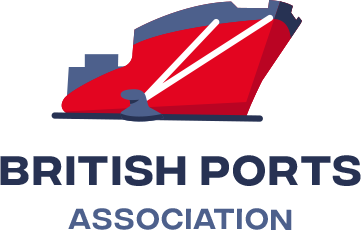In 2022 Dart Harbour identified the need to begin decarbonisation of our fleet, with an eventual aim of a net zero fleet. After considering various options, we decided that our first project for this target would be to convert our old yacht taxi ‘Phoebe’ to fully electric propulsion.
Phoebe is a 5.5m long Fitzgerald Marine FM19 inland passenger boat. She was suffering from severe structural problems, and we were seriously considering scrapping her, however we decided that a rebuild was practical, in conjunction with a conversion to electric.
We had several aims for this project:
• Fully electric propulsion – we did not want a hybrid vessel.
• Safe – in particular having batteries that minimised fire safety concerns.
• Designed to match our existing operations – Sufficient range to complete a standard 6 hour shift without concern, a max speed of at least 5 knots and simple to use for our team of yacht taxi drivers. Overnight charging using existing infrastructure.
• Adequate stability – this boat has a relatively low freeboard, and would need to be re-certified under the Inland Waters Small Passenger Boat Code. Total weight of batteries and other components was critical
• Commercially viable – we wanted to prove that this type of project was viable even without grant funding. This meant it needed a reasonable payback period, and needed to cost an amount that we could afford within our normal budget.
• Visible – we chose the yacht taxi as we want our customers to be able to experience electric propulsion, and hopefully be inspired to consider a similar boat for themselves.
We selected MIT as our main suppliers, on the basis of their experience with similar vessels, and the comprehensive analysis they carried out of our operations, which convinced us of the viability of this project.
Setting the specification
Our first priority was to specify the size of the battery needed for the intended operation. Too large a battery would have been expensive, and would compromise stability. Too small a battery would have made the boat useless in operation.
At first glance, the aim was impossible – a 6 hour shift at 5 knots needed a far larger battery than we could fit onboard. We analysed actual operation, using a simple phone GPS tracker, and were able to get a good view of the actual usage of the boat.
The boat was fitted with a 30HP Beta diesel engine with a 19kW MCR. In theory, this could drive the boat at up to 7-8 knots at 3600 RPM, however the harbour speed limit is 6 knots, and hull speed is around this level. Only around 8kW was needed to reach 6 knots at 1200 RPM.
We selected a Bellmarine 20kW Drivemaster motor, and 2x 10.3kWh Transfluid LiFePO4 batteries
We carried out the conversion ourselves alongside local contractors.
The installation has been successful. Phobe can cruise at 5 kts for 6 hrs at 900rpm (4kW power)
In summer 2024, Phoebe has:
• Operated for 295 motor hours
• Used 1212 kWh of electricity
• Travelled approx. 1300 NM
• Had around 100 charge cycles (2.5% of battery life)
• Saved approx. 1200 litres of diesel
• Saved approx. 3.3 tonnes of direct CO2 emissions.
• Saved approx. £900 fuel costs (electricity use vs diesel use)
Typical operation
• Up to a 10-hour shift on a full charge, approx. 50% of time underway
• Battery charges fully overnight on standard 220V 32-amp marine socket.
Suppliers
• Propulsion system: MIT – www.mitgroup.co.uk
o Batteries: Transfluid – www.transfluid.eu
o Motor: Bellmarin – www.bellmarine.tech
• Shipwright: Breeze Boat Maintenance – www.breezeboatmaintenance.com
• Electrical install: Devon Marine Electronics – www.devonmarineelectronics.co.uk
• Certification: South Hams District Council – www.salcombeharbour.co.uk
